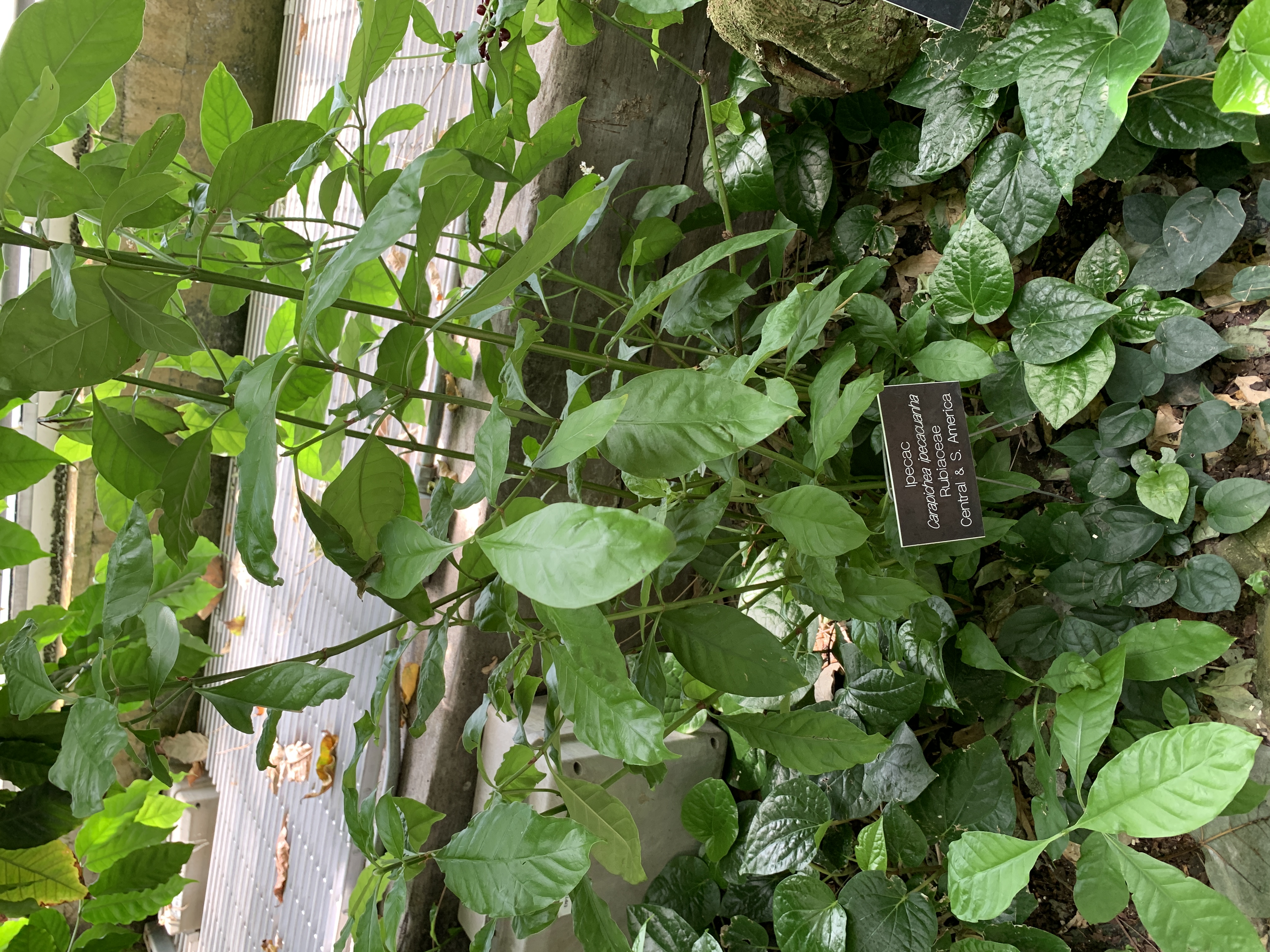|
Carapichea
''Carapichea'' is a genus of flowering plants in the family Rubiaceae. It is native to Central America and northern South America from Nicaragua to Brazil. One species, '' Carapichea ipecacuanha'', is used medicinally as the source of ipecac, a powerful emetic. Species include: Selected Rubiaceae Tribes and Genera. Tropicos. *'' Carapichea adinantha'' *'' Carapichea affinis'' () L.Andersson - |
Carapichea Fimbriflora
''Carapichea'' is a genus of flowering plants in the family Rubiaceae. It is native to Central America and northern South America from Nicaragua to Brazil. One species, '' Carapichea ipecacuanha'', is used medicinally as the source of ipecac, a powerful emetic. Species include: Selected Rubiaceae Tribes and Genera. Tropicos. *'' Carapichea adinantha'' *'''' () L.Andersson - |
Ipecac
Syrup of ipecac (), or simply ipecac, is a drug that was once widely used as an expectorant (in low doses) and a rapid-acting emetic (in higher doses). It is obtained from the dried rhizome and roots of the ipecacuanha plant (''Carapichea ipecacuanha''), from which it derives its name. It is no longer used in medicine. In particular, the rapidly induced forceful vomiting produced by ipecac was considered for many years to be an important front-line treatment for orally ingested poisons. However, subsequent studies (including a comprehensive 2005 meta-study) revealed the stomach purging produced by ipecac to be far less effective at lowering total body poison concentrations than the adsorption effect of oral activated charcoal (which is effective through the entire gastrointestinal tract and is often coupled with whole bowel irrigation). Ipecac also presents a small risk of overdose (being a mild poison itself) and a major risk of esophagitis and aspiration pneumonia if used to p ... [...More Info...] [...Related Items...] OR: [Wikipedia] [Google] [Baidu] |
Carapichea Ipecacuanha
''Carapichea ipecacuanha'' is a species of flowering plant in the family Rubiaceae. It is native to Costa Rica, Nicaragua, Panama, Colombia, and Brazil. Its common name, ipecacuanha (), is derived from the Tupi ''ipega'kwãi'', or "road-side sick-making plant". The plant has been discussed under a variety of synonyms over the years by various botanists. The roots were used to make syrup of ipecac, a powerful emetic, a longtime over-the-counter medicine no longer approved for medical use in the West for lack of evidence of safety and efficacy. An example of emetic compound from the roots is emetine. Description Ipecacuanha is a slow-growing plant, which reduces its commercial appeal as a crop plant. It is seldom cultivated in South America but it has been cultivated in India and elsewhere. The root of ipecacuanha has been used in preparation of the medicament, the syrup, is simple or divided into a few branches, flexuous, and composed of rings of various size. It is somewha ... [...More Info...] [...Related Items...] OR: [Wikipedia] [Google] [Baidu] |
Rubiaceae
The Rubiaceae are a family of flowering plants, commonly known as the coffee, madder, or bedstraw family. It consists of terrestrial trees, shrubs, lianas, or herbs that are recognizable by simple, opposite leaves with interpetiolar stipules and sympetalous actinomorphic flowers. The family contains about 13,500 species in about 620 genera, which makes it the fourth-largest angiosperm family. Rubiaceae has a cosmopolitan distribution; however, the largest species diversity is concentrated in the tropics and subtropics. Economically important genera include '' Coffea'', the source of coffee, '' Cinchona'', the source of the antimalarial alkaloid quinine, ornamental cultivars (''e.g.'', '' Gardenia'', '' Ixora'', '' Pentas''), and historically some dye plants (''e.g.'', '' Rubia''). Description The Rubiaceae are morphologically easily recognizable as a coherent group by a combination of characters: opposite or whorled leaves that are simple and entire, interpetiolar sti ... [...More Info...] [...Related Items...] OR: [Wikipedia] [Google] [Baidu] |
